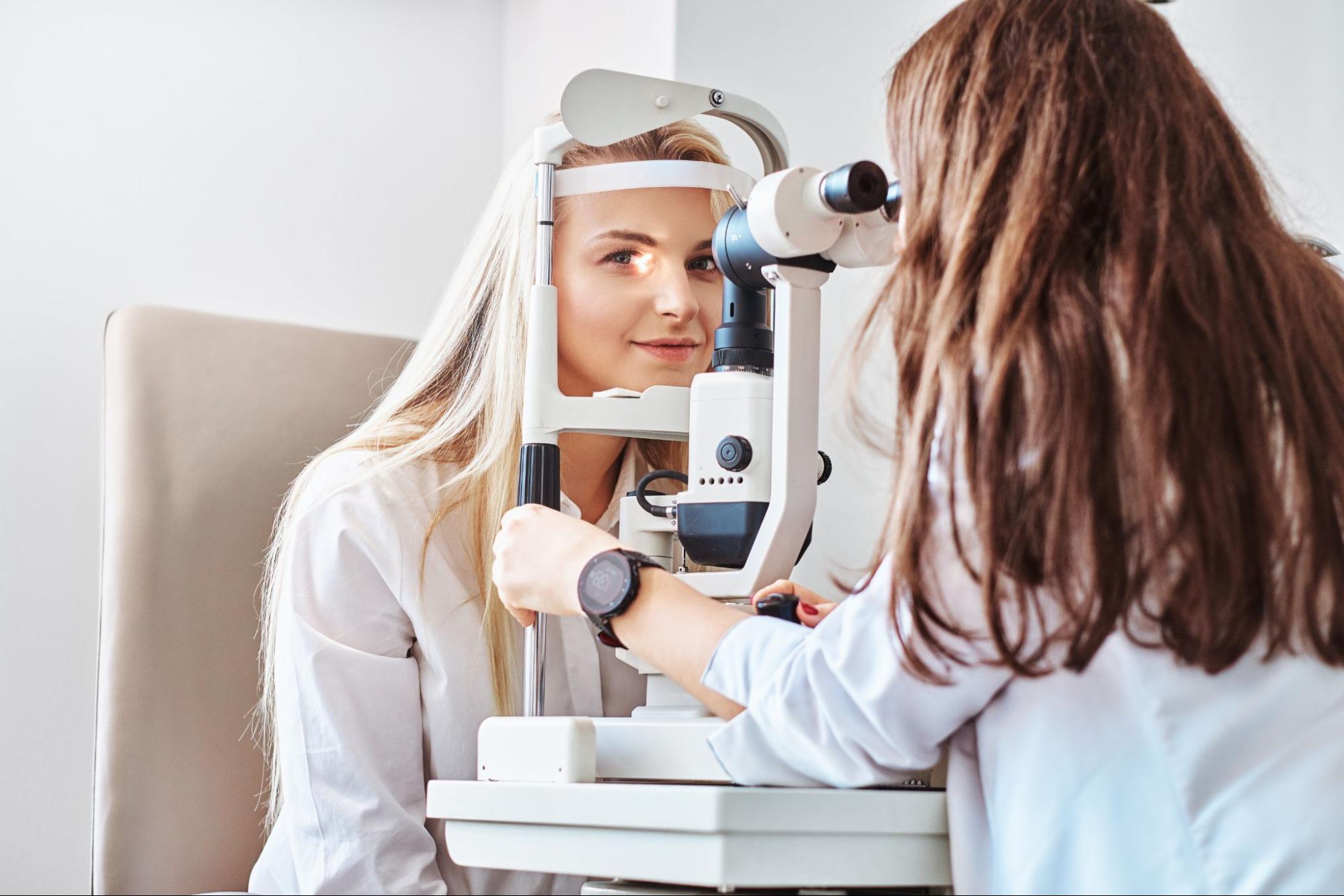If you have experienced persistent eye strain, headaches, blurry vision, and trouble focusing your eyes, you may have a condition called binocular vision dysfunction. It’s a relatively common issue that can be easily treated. However, a typical eye exam can miss the symptoms of binocular vision dysfunction, delaying treatment.
Binocular vision dysfunction, or BVD, is a condition in which the line of sight of one of your eyes differs from the other eye. Even a small difference in alignment can affect how your eyes and brain work together to process visual information. Your eyes will try to align properly to see clear images, which can result in eye strain or headaches. Your vision may be affected, making it difficult to see clearly.
If you have BVD, you’ll need to see an eye doctor specializing in diagnosing and treating eye alignment problems. Most of the time, BVD can be corrected with special glasses or changes to your existing eyeglass prescription.
What Is Binocular Vision?
Binocular vision is the medical term for the way your eyes work together. Each eye takes in an image and transmits that image to your brain. Your brain then interprets the two images, allowing you to see the world in three dimensions. This 3D view of the world helps you estimate distances, coordinate movements like walking, and focus on objects, faces, books, and computer screens.
If your eyes don’t work together correctly, you may have a binocular vision dysfunction.
What Is Binocular Vision Dysfunction?
Binocular vision dysfunction (BVD) is a visual disorder characterized by misaligned eyes. Instead of sending two versions of the same image to your brain, each eye sends a slightly different image. Your eyes and brain will continually struggle to get in proper alignment. Your eye muscles will strain to achieve a single, clear image from the visual information received.
The heavy strain will force your eye muscles to overwork, making it difficult for you to carry out daily tasks. You may notice symptoms such as headaches, dizziness, blurry eyesight, and double vision. People with BVD can have poor hand-eye coordination and difficulty judging distances.
BVD can result in other symptoms as well, including:
- Headaches
- Dizziness
- Double vision or blurred vision
- Words moving on a page while reading
- Covering one eye to make it easier to see
- Anxiety in crowds or large open spaces
- Lack of balance or drifting while walking
- Aching eyes, especially with eye movement
- Neck, upper back or shoulder pain
- Head tilting
- Dizziness/anxiety while driving
What Causes Binocular Vision Dysfunction?
There are a variety of causes of BVD. Some people are born with conditions that lead to a binocular vision disorder. Facial asymmetries that cause one eye to be higher than the other can lead to BVD. Some people are born with reduced function of the ocular nerve or muscles around one eye. The symptoms of BVD can grow worse over time as the eyes continue to strain to produce clear images.
Other people develop BVD as a result of age-related changes to vision and facial muscle tone. Traumatic brain injuries and injuries that cause facial nerve damage may also lead to misaligned eyes and BVD.
Problems Associated With Binocular Vision Dysfunction
People with BVD often find that they have trouble completing daily tasks. Some people are reluctant to drive because their ability to judge distances is affected. Others find crowded places disorienting because it’s hard to focus visually when there is too much going on around them.
Children with BVD may struggle in school. They may need help with focusing on computer screens, books, or worksheets. Younger children may experience delays in learning to read because they can’t see the page clearly. Older students may get tired and lose concentration due to constant eye strain.
How Is Binocular Vision Dysfunction Diagnosed?
BVD can be hard to detect because the symptoms are so similar to other health conditions, like migraines or vertigo. Children with BVD may be diagnosed with ADHD, dyslexia or other learning disabilities. Treatment for those conditions won’t improve the symptoms of BVD.
A typical eye exam or medical exam can easily miss the signs of BVD. Diagnosing BVD requires a specialized eye exam to check the alignment of your eyes. The process for diagnosing BVD is non-invasive and isn’t painful. The doctor will ask you about your medical history. They will also ask you to fill out a questionnaire about specific symptoms, how long you have had them, and how they affect your daily life.
During the examination itself, your doctor will use special lenses and lights to see which of your eye muscles are misaligned.
Management Options For Binocular Vision Dysfunction
Most people can manage BVD with glasses that have special prism lenses. Prism lenses adjust the images you see to be level with the natural position of your eyes. This eases the visual strain and makes it easier to focus and see clearly. Most people can expect a 30-50% vision improvement immediately after wearing the prism eyeglasses. After wearing the glasses regularly for a few months, you may notice a 70-80% reduction of symptoms of BVD.
Prism eyeglasses don’t look any different from regular eyeglasses. The prism is built into the lens and isn’t noticeable. You can have a prismatic lens in addition to any regular prescription eyeglasses to correct any vision problems you have in addition to BVD. You won’t need to change glasses for different tasks. Most vision insurance plans will cover prism lenses just like they cover regular glasses.
If you think you have BVD, contact NeuroVisual Specialists of Florida. As the only certified optometrist in the entire state of Florida specializing in NeuroVisual Optometry, Dr. Sonneberg is dedicated to treating patients that suffer from binocular vision dysfunction. NeuroVisual Specialists of Florida and iSee VisionCare provide high-quality eye care products and services for all.
Fill out our online questionnaire or call us today at (561) 733-9008 to schedule an appointment.


